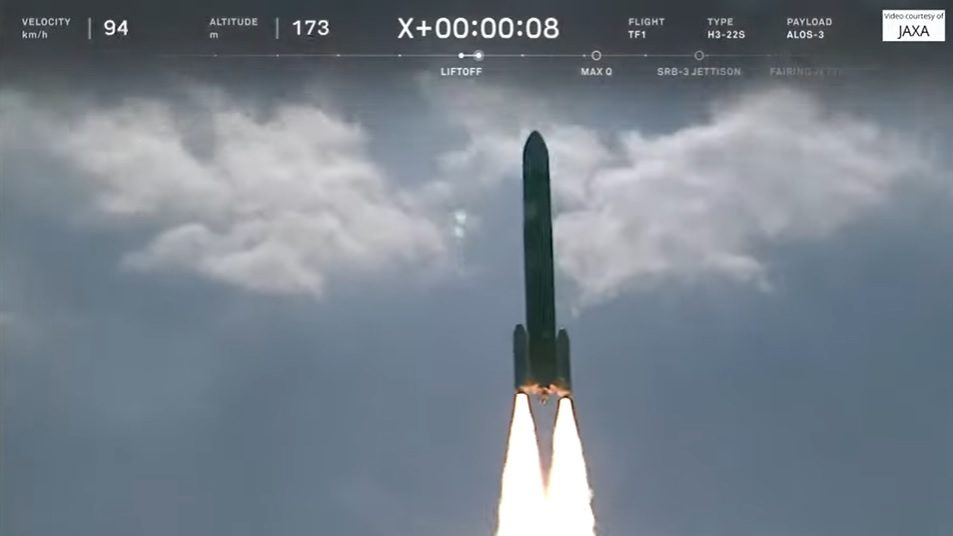Japan faces a setback in its ambitions to compete commercially with its new H3 expendable rocket after the H3-22S failed on its first flight due to second stage failure. The solid rocket boosters and the liquid propellent first stage appeared to work well as did the dog-leg trajectory (needed to avoid dropping stages on the Philippines) after the rocket was launched at 0137 GMT on 7 March from Tanegashima, Japan.
However, with the first stage dropped off more than five minutes into the flight, there was an ignition failure on the second stage’s liquid oxygen (LOX)/liquid hydrogen powered LE-5B-3 engine. When it became apparent that the H3 was not going to achieve orbit, ground control issued a destruction command. The resulting debris, which included the three metric ton Advanced Land Observation Satellite 3 (ALOS 3) on the flight, fell into the Pacific. A full investigation into the failure was announced.

H3 (H3-22s) heads into the clouds on its maiden flight but its debris would soon be in the water. Courtesy: JAXA
The launch marked the second attempt to get the H3 to fly. The original attempt, on 17 February, was aborted just one second before launch. The LOX/liquid hydrogen fed LE-9 engines of the main stage rocket had been ignited but were immediately switched off after computer systems detected a fault (electrical noise/voltage transient in the LE-9 engine controller). The abort sequence could only take place because the rocket’s solid SRB-A3 rocket boosters had not yet been ignited.
Update on 29 March: Seradata is aware of a small insurance cover of about US$12 million that was carried by the ALOS 3 launch.
Comment by David Todd:This failure is surprising – not in itself since maiden flights have a circa 40% failure rate, according to the Seradata launch and spacecraft database – but because of the element that failed.
The first stage and pair of SRB-3 solid rocket booster stages were all new and it was thought that they (especially the first stage which had significant engine development issues with its pair of new LOX/liquid hydrogen LE-9 expander bleed cycle engines) might have shown a weakness. However, it emerged that these worked well and it was actually the derivative second stage that failed.
While this was also a new stage, it was closely modelled on the H-2A upper stage and only had a slightly modified LE-5B-3 engine. Nevertheless, the Japanese should not lose hope. With the H3, Japan has finally achieved what it always wanted: a rocket cost effective enough to be truly competitive on the global market. At its launch price it can compete with the SpaceX Falcon 9. All it needs to do now is prove its reliability.
Update on 3 January 2024: The Iranian Qaem-100 had a launch failure at the Shahroud launch site on 4 March 2023. The Nahid 1(R) communications satellite was lost.







